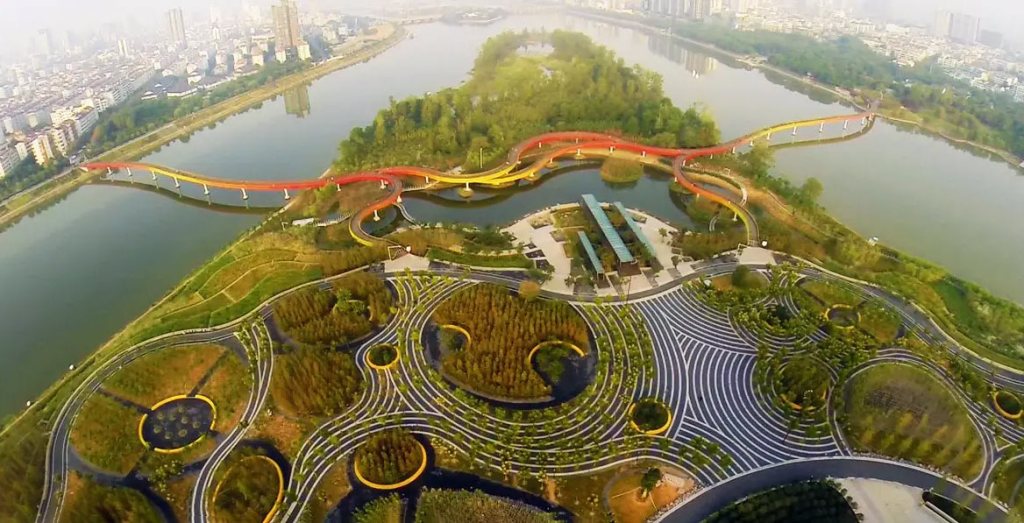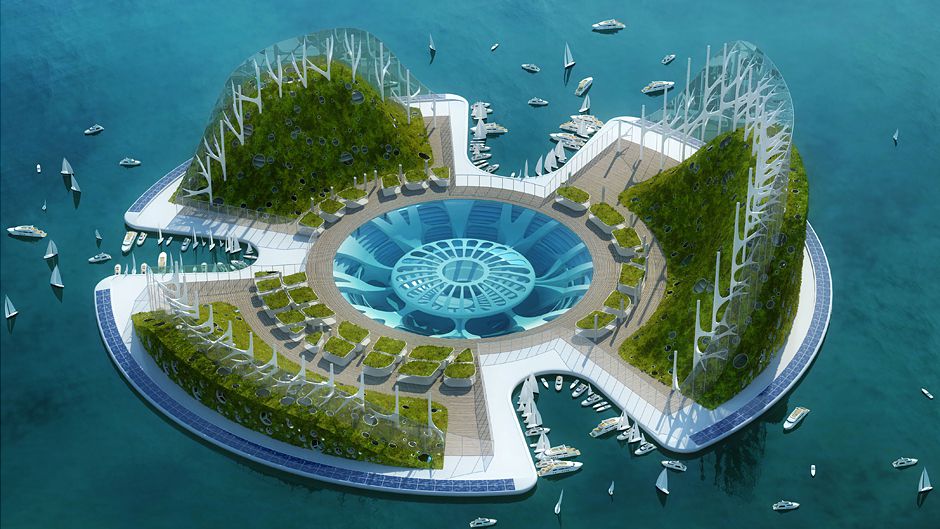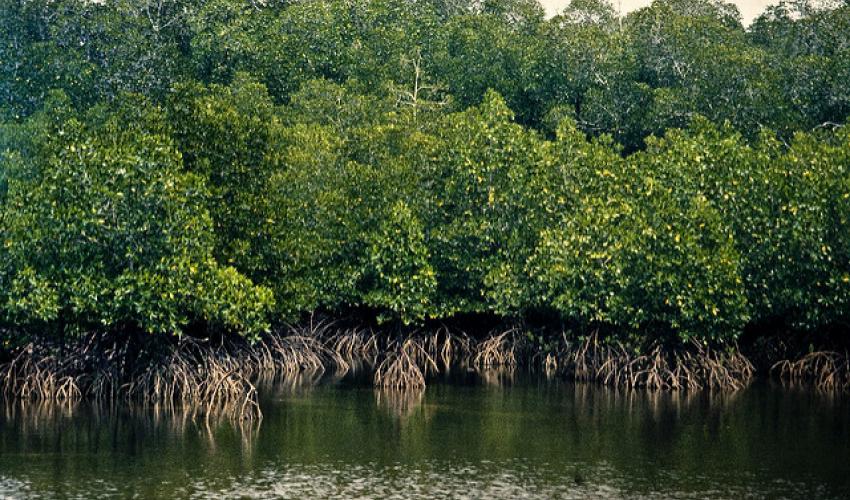Fires, droughts, hurricanes – in each country the effects of climate change are manifested differently. For example, in August, 2020, California’s Death Valley recorded the highest temperature on the planet for the entire observation period -54.4 ℃. Greece was recently hit by a cyclone (which is not typical of the Mediterranean in general), which flooded about 5,000 houses in the central regions of the country. And in Ukraine, 2020 began with an extremely warm and snowless winter, and continued with droughts, floods and forest fires.
To reduce their own vulnerability and turn new conditions into new opportunities, countries need to adapt to the effects of climate change. This can bring additional benefits to people. For example, the creation of new jobs will increase the number of jobs, and emergency preparedness will reduce the damage that could cause natural disasters.
Thankfully to the Ecoaction NGO article let’s talk about how to prepare for the seemingly inevitable – rising sea levels.
Rising sea levels are one of the consequences of climate change. The rate of ocean growth is very slow – 1-2 mm / year, but the rise of even a few centimeters already has significant consequences for many countries. And due to global warming, the rate of sea-level growth is only accelerating.
By 2100, the world’s ocean level could rise by 58-98 cm, and 1.79 million square kilometers of land could be flooded. As a result, about 187 million people will be forced to move from these areas.
If we do not start adapting now, the annual losses from flooding in the EU could rise sharply from 1.4 billion euros today to almost 1.6 trillion euros by 2100. At the same time, timely adaptation measures can prevent 95% of projected economic losses.
Even a small increase in sea level will have a significant impact on infrastructure, industry, agriculture and human settlements.
There are many adaptation solutions and they must be individual for each locality. To do this, cities must first assess their most vulnerable points and develop plans on how to prepare and protect themselves from future risks. This is how other countries are already doing it.
The Netherlands is a country that for most of its existence has been concerned with how to coexist peacefully with the sea, as half of the country is below its level. Throughout history, the country has built many dams, sea walls, pumps. But so far this is not enough, because the sea level has never risen so fast.
In 2007, the Dutch government joined forces with academics, NGOs and businesses in the Delta program. Its goal is to protect the Netherlands from floods now and in the future; provide sufficient fresh water supplies and create a climate-resistant country. The Netherlands updates its protection plans every year, as new data and new risk factors are constantly emerging.

As one of the approaches to adapting to sea level rise, the Netherlands has decided to explore new ways of using water bodies. For example, a water farm for 35 cows was built in Rotterdam in 2020. It is as environmentally friendly as possible, so rainwater is collected and filtered to provide drinking water, and electricity is generated from a floating solar power plant near the farm.
In addition, the Netherlands is experimenting with houses on the water, which can accommodate up to 400 people. Currently, such a building is used as a venue for events, but over time, such structures may become more common, especially in cities that are vulnerable to rising sea levels.
“Sponge Cities” of China
China has more than 100,000 km2 of coastal territory at an altitude of up to 10 meters above sea level. China’s largest cities, especially those on the coast, are already suffering from regular floods caused by heavy rainfall. Rising sea levels can only make matters worse. In addition, it jeopardizes the supply of drinking water to coastal cities through the salinization of groundwater.

In 2015, the Chinese authorities launched an initiative “Sponge Cities” in 30 settlements. The idea is to reuse 70% of the water that falls in the form of precipitation, or that it penetrates the soil and does not flood homes. For this purpose public premises are modernized, artificial reservoirs and waterlogged areas that are able to absorb water are created. Municipality improves the city’s drainage systems, plant more green areas. The idea of ”SpongeBob City” is not only about infrastructure, but in general about understanding the importance of countering flooding in cities and providing drinking water.
An artificial island in Kiribati
Island countries are among the first to be adversely affected by climate change, and especially by rising sea levels. Among them, the Republic of Kiribati is a state in the Pacific Ocean, located on 33 coral islands, most of which rise only 2-3 meters above sea level, so they risk being partially or completely submerged. During high tide, saltwater from the ocean already floods homes and enters some wells, exacerbating the problem of drinking water on the island.

Kiribati authorities are considering several options for the future of the state. The country has acquired almost 2,500 hectares of land on the island of Fiji as a potential refuge, as the country is above sea level and its coastline is more stable.
The government also urged residents to consider going abroad. But since the term “climate refugee” is not yet legally fixed, migration to other countries is quite difficult.
The most futuristic option is to create an artificial island. This idea was proposed in 2016 by former Kiribati President Anote Tong. She was somewhat skeptical, but the presidential administration refused to give up and even signed an agreement with the Japanese corporation Shimizu. The company has created a model of an artificial island that could potentially be home to 50,000 people – half of Kiribati’s current population. The estimated cost of the project is $ 450 million for the island, which is extremely expensive for Kiribati, so for now, the project had to be abandoned.
Also in 2003, the Kiribati authorities launched an adaptation program. Water management plans have been developed, and coastal sea walls have been built that are parallel to the shore, preventing further erosion of the shoreline and protecting the coastal area from flooding. Mangrove trees were also planted.
Mangrove forests in Vietnam
Mangrove forests are a unique ecosystem that protects coastal areas from flooding and provides shelter for a variety of animals, fish, and birds. Due to their powerful root system, trees can effectively reduce the energy of the waves and protect the soil from erosion. Mangrove forests also play an important role in mitigating climate change, as they absorb and retain large amounts of carbon.

Although mangrove forests can protect coastal areas from storms, trees are also vulnerable to climate change because they cannot adapt to such rapid sea-level rise. There are examples around the world of restoring and protecting mangrove forests. In Vietnam, for example, large-scale rehabilitation of mangrove forests has been introduced as one of the key methods of adaptation. For the country, forests have played a role not only in protecting coastal areas, but have also been used to eradicate poverty and improve the lives of the population. Locals can make money from fishing, tourism and even using mangrove fruit for cooking.



